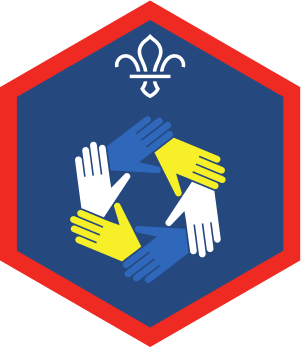Hidden treasure
You’ll need
- Objects (for example chairs, poles, boxes, rope, cones)
- Treasure (for example chocolate coins or pretend money)
Before you begin
- Use the safety checklist to help you plan and risk assess your activity. Additional help to carry out your risk assessment, including examples can be found on our safety page
Make the obstacle course
- The person leading the game should introduce a signal that means ‘stop’, to keep everyone safe. If players hear this signal, they should put both feet on the floor, stand still, and be quiet.
- Place the treasure at one end of the room.
- Use the objects to create obstacles in the middle of the room.
Tackle the obstacle course
- Split into pairs. In each pair, one person will be the instructor and the other the treasure hunter. The pairs will swap after, so everyone gets a turn at each role.
- Pairs should stand at the opposite side of the room to the treasure, so that the obstacles block their path.
- The treasure hunters should be blindfolded. They can’t talk.
- Using words only, instructors must guide their treasure hunters to the treasure, avoiding the obstacles in the way. Instructors should stand still and give instructions from the start line.
- Once the treasure hunters have the treasure (or after half of the time has passed), players should swap roles in their pair.
Reflection
To get the treasure, you had to communicate well. Was it easy to communicate with just your voice?
Was it easy to understand the directions you were given?
Was it easy to listen when lots of other activity was going on? How did you talk to make it easy to understand your instructions?
Did any of the instructors give really good instructions? Why were they so helpful?
To reach the treasure, you also had to problem-solve. How did you choose how to deal with problems?
Did you try more than one technique before you found one that worked?
Did each obstacle have the same solution, or did you have to adapt your plan?
Which role did more of the problem-solving, the instructor or the treasure hunter?
Safety
All activities must be safely managed. You must complete a thorough risk assessment and take appropriate steps to reduce risk. Use the safety checklist to help you plan and risk assess your activity. Always get approval for the activity, and have suitable supervision and an InTouch process.
- Food
Remember to check for allergies, eating problems, fasting or dietary requirements and adjust the recipe as needed. Make sure you’ve suitable areas for storing and preparing food and avoid cross contamination of different foods. Take a look at our guidance on food safety and hygiene.
- Active games
The game area should be free of hazards. Explain the rules of the game clearly and have a clear way to communicate that the game must stop when needed. Take a look at our guidance on running active games safely.
Increase or decrease the number of obstacles, or how difficult they are to overcome.
Take it in turns to play through the course, so the treasure hunter only has to listen to one set of instructions.
Ask the pairs to agree on signals for forward, back, left, and right (like claps or whistles)
so they can attempt the course without talking.
To make it more challenging, any treasure hunter touching an obstacle should start again.
Make it accessible
All Scout activities should be inclusive and accessible.
This game could be used to introduce the Disability Awareness Activity Badge.
Use the reflection to introduce the idea of visual or hearing impairments, and how it feels to be helped.


